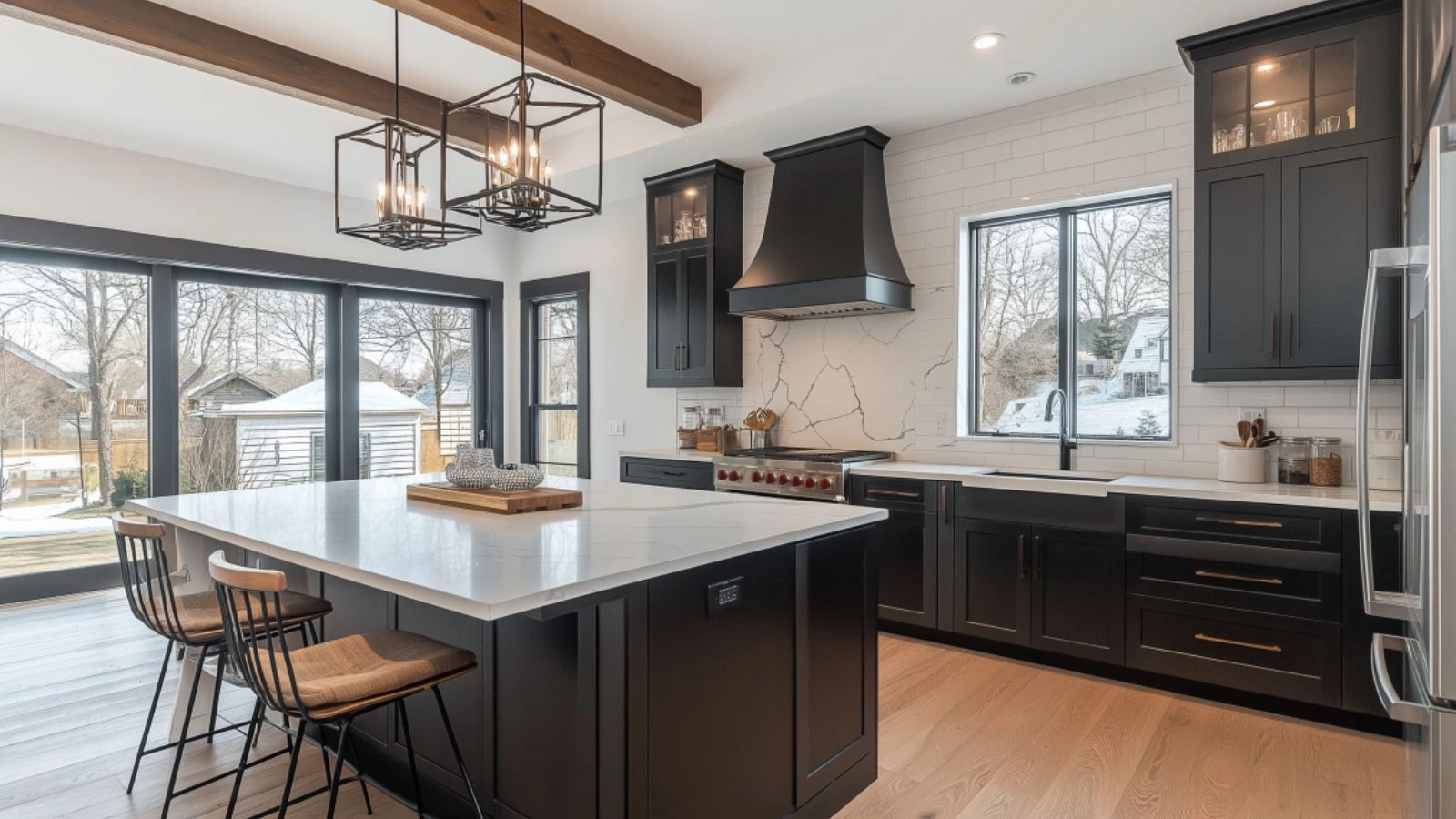Maximize Style: Two-Tone Kitchen Island Design Concepts
Table of Contents
The kitchen island is no longer just a practical work surface—it’s the design anchor of the modern kitchen. As open-concept layouts and personalized interiors become the norm, homeowners are finding innovative ways to make their kitchen islands stand out. One of the most stylish and versatile design trends gaining momentum is the two-tone kitchen island. This approach plays with contrast, color, and material combinations to add depth and interest while allowing your island to express its own identity within your space.
Whether you’re renovating your kitchen or building a new one from scratch, two-tone island design is a strategic way to add style without sacrificing function. From pairing warm wood tones with bold paint colors to mixing metals and countertop finishes, the design possibilities are endless. This article explores a variety of two-tone kitchen island concepts to help you find the perfect pairing for your kitchen aesthetic—be it modern farmhouse, classic transitional, or sleek contemporary.
We’ll cover practical layout tips, material pairings, and popular color combinations while showing how two-tone islands can suit spaces both large and small. With visual guides and MidJourney image prompts to inspire your design, you’ll be equipped to bring the perfect balance of contrast and cohesion to your kitchen.
Pair Natural Wood with Painted Bases for Rustic Elegance
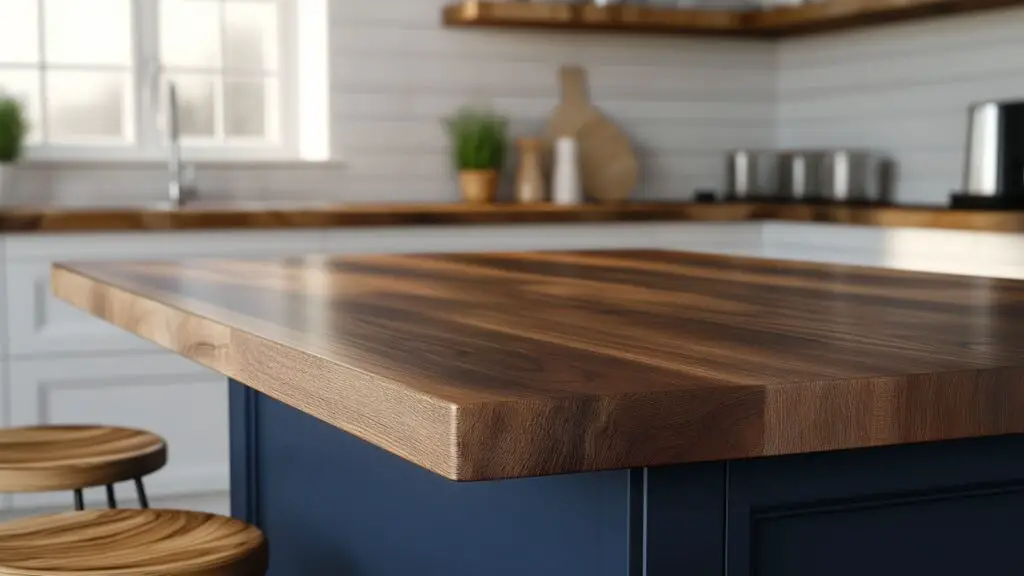
One of the most popular two-tone kitchen island concepts is the combination of a stained wood countertop or base with a painted counterpart. This mix infuses rustic charm with a fresh, tailored finish—ideal for farmhouse, transitional, or cottage-style kitchens.
A natural wood top can warm up cooler tones such as navy, sage, or charcoal on the base cabinetry. The reverse also works beautifully: a painted top paired with a weathered wood base creates an eye-catching reversal that’s both refined and grounded. Select finishes that highlight the wood grain and complement nearby cabinetry or flooring for visual flow.
This pairing is particularly useful in open-concept homes, as it helps visually define the island from the surrounding cabinetry, giving it a furniture-like presence.
Material Combination Table – Wood + Paint Pairings
| Wood Tone | Paint Color Base | Ideal Kitchen Style |
|---|---|---|
| Reclaimed Oak | Matte Charcoal | Rustic Farmhouse |
| Light Maple | Sage Green | Cottagecore or Soft Country |
| Walnut | Deep Navy | Transitional or Classic |
Use Contrasting Cabinets and Countertops for Modern Balance
For those who lean into sleek, structured design, contrasting base cabinetry and countertops deliver a clean yet dynamic aesthetic. This look works exceptionally well in modern and contemporary kitchens, where high-contrast palettes are a core design element.
Imagine a kitchen island with black or graphite cabinetry paired with a bright white quartz or marble countertop. This bold pairing makes the island a visual anchor in the room while ensuring it doesn’t feel too heavy or monolithic. Alternatively, reverse the contrast with light-toned base cabinets and a dark stone top—perfect for Scandinavian-inspired or minimalist designs.
To maintain balance, ensure that other elements in the kitchen echo either the countertop or base color. Repetition of color or material in open shelving, hardware, or backsplashes can tie the space together.
Contrast Table – Cabinet + Countertop Combos for Style Impact
| Cabinet Color | Countertop Finish | Suggested Aesthetic |
|---|---|---|
| Matte Black | White Marble or Quartz | Modern Industrial |
| White or Off-White | Charcoal or Soapstone | Scandinavian or Clean Minimal |
| Navy Blue | Warm Butcher Block | Transitional or Coastal |
Contrasting cabinetry and countertops also allow you to play with lighting. Install under-cabinet LEDs to accentuate the surface and bring out the natural veining or texture of the material. This layered look blends form and function in a high-impact way.
Incorporate Two-Tone Cabinetry for Depth and Dimension
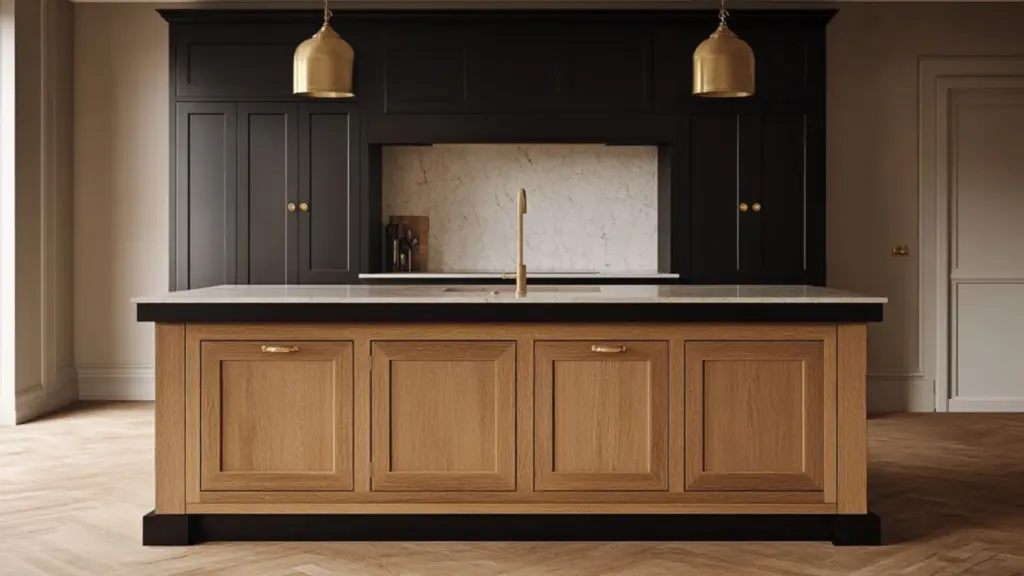
Another effective approach to a two-tone kitchen island is using two distinct cabinetry finishes. This can mean one color on the island’s base cabinets and a different finish on the drawers or end panels. Alternating materials such as painted MDF with natural oak adds contrast while staying cohesive.
For example, pairing navy lower cabinets with crisp white drawers offers a nautical flair that feels fresh and balanced. Or try a muted color like greige on the main panels with darker stained oak drawer fronts for an organic, textural finish.
This concept is ideal for kitchen islands with large storage zones or seating areas where dimension matters. It brings visual interest without adding clutter or overwhelming a compact layout.
Two-Tone Cabinet Configuration Table
| Base Material | Accent Cabinet Finish | Design Tone |
|---|---|---|
| Painted White | Stained Oak Drawers | Warm and Textural |
| Deep Teal | Natural Ash End Panels | Bold yet Balanced |
| Matte Black | Brass Mesh Cabinet Doors | Edgy Industrial-Luxe |
Define Space with a Two-Tone Island in an Open Concept Layout
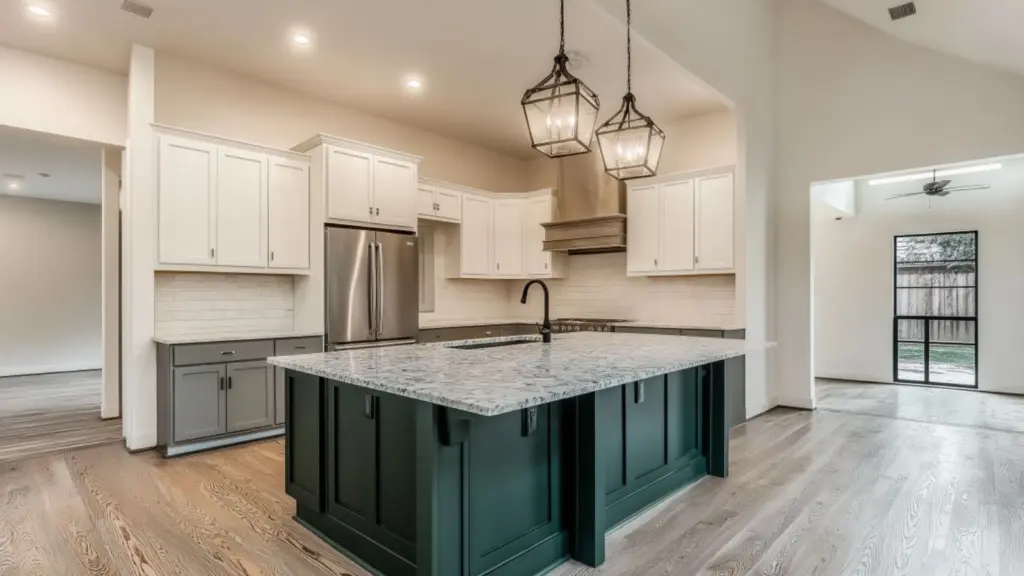
In open-plan kitchens, a two-tone island serves as a natural room divider while maintaining an airy, cohesive look. By giving your island a distinct color or finish, you establish visual separation from the rest of the kitchen cabinetry without the need for physical barriers.
This method works especially well in kitchens that flow into living or dining spaces. Choose a darker base color for the island to anchor the space and make it feel like a stand-alone furniture piece. A lighter or neutral top keeps things balanced and prevents the island from feeling too heavy.
To enhance the transition between spaces, echo the island’s tones in furniture, lighting, or textiles in adjacent areas—like dining chair upholstery or area rugs.
Open Layout Zoning Table
| Island Finish | Surrounding Cabinet Color | Zoning Effect |
|---|---|---|
| Deep Green Base | White Perimeter Cabinets | Defines island as central hub |
| Dark Grey Cabinetry | Soft Beige Perimeter Units | Adds architectural depth |
| Blue Painted Panels | Light Wood Cabinets | Casual, coastal separation |
Blend Metal and Wood Finishes for Industrial Warmth
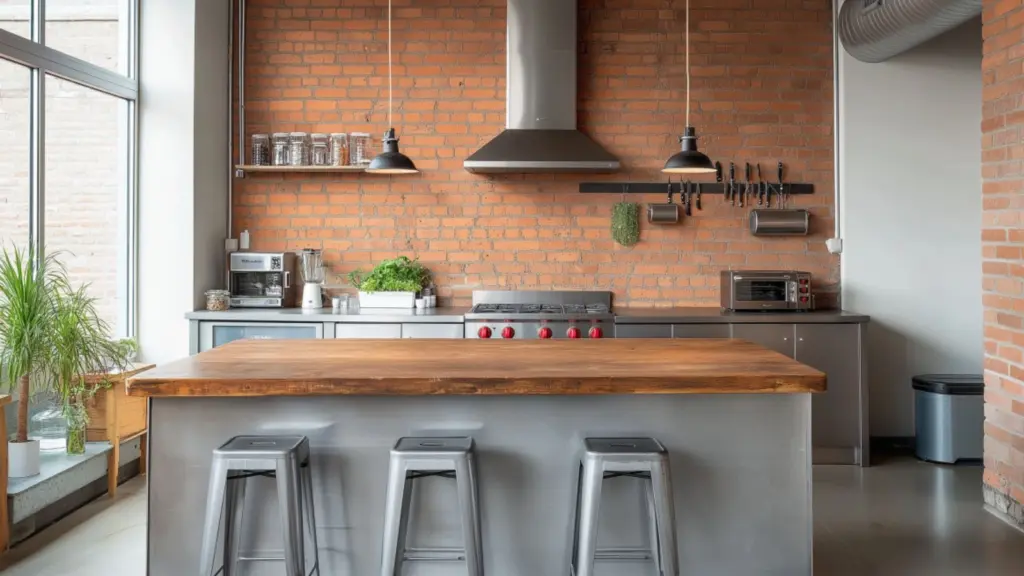
Combining metal and wood elements in your two-tone kitchen island brings a raw, tactile warmth that’s ideal for industrial or rustic-modern aesthetics. For instance, a metal base with riveted panels paired with a warm reclaimed wood top exudes vintage utility with contemporary edge.
This look pairs beautifully with Edison bulb pendant lights, exposed brick walls, or polished concrete floors. If you prefer a softer industrial touch, opt for brushed brass or aged copper panels paired with a walnut or butcher block surface.
Finish off the island with stools made of mixed materials—metal frames with wooden seats—to reinforce the theme without overwhelming the space.
Material Fusion Table – Industrial Two-Tone Pairings
| Metal Element | Wood Companion | Suggested Vibe |
|---|---|---|
| Aged Iron | Butcher Block Top | Industrial Farmhouse |
| Brushed Brass Panels | Dark Walnut Surface | Luxe Industrial Chic |
| Matte Black Frame | Reclaimed Oak Planks | Urban Rustic |
These combinations age beautifully and feel even more authentic over time, making them a great long-term investment for style and practicality.
Combine Color Blocking Techniques for Bold Design Statements
If you’re looking for a more dramatic aesthetic, color blocking is a bold approach to the two-tone kitchen island. This involves pairing two high-contrast colors—such as black and blush pink, navy and gold, or forest green and white—in clean, geometric sections.
Use color blocking to emphasize architectural features of the island, like fluted panels, drawer fronts, or structural elements. The key to success with this concept is precision: clean lines and careful placement prevent the look from becoming chaotic.
Color blocking is especially effective in contemporary or artistic homes, and works best when mirrored in smaller details around the kitchen.
Color Blocking Inspiration Table
| Color Combo | Design Message | Best Application |
|---|---|---|
| Black + Blush | Bold with a touch of feminine | Drawer fronts and side panels |
| Navy + Mustard | Playful yet grounded | Front panels with brass fixtures |
| White + Emerald Green | Clean and organic | Structural island contrast |
Conclusion
Two-tone kitchen island designs are a powerful tool for elevating style and adding depth to your kitchen. Whether you prefer soft contrasts for a cozy rustic vibe or sharp color pairings for a modern statement, this trend offers endless flexibility. By thoughtfully combining materials, colors, and layout strategies, you can create a kitchen island that feels both personal and polished. From wood-and-paint classics to metal-and-stone contrasts, these two-tone ideas prove that style doesn’t have to be one-dimensional—especially in the heart of the home.

